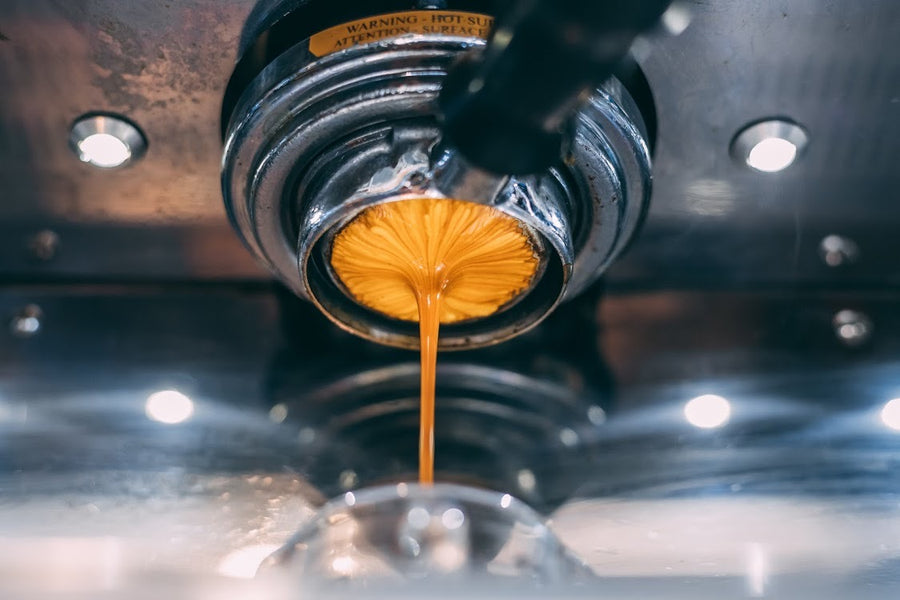SOE Single Origin Espresso – The Perfect Choice for Espresso Lovers
Coffee Beans 101: Everything You Need to Know Concerning Espresso and Blended Coffee Beans
When it involves coffee, comprehending the subtleties of espresso and combined beans can transform your everyday cup. You'll uncover the distinct features of Arabica and Robusta beans, and exactly how each impacts taste and caffeine material. From the growing process to toasting strategies, every step plays a duty in your coffee experience. What makes the ideal mixture? Allow's discover the vital components that add to an extraordinary cup of coffee.
Recognizing Coffee Beans: Types and Varieties
When diving into the world of coffee, comprehending the kinds and selections of coffee beans is necessary for every single lover. You'll mostly come across two main types: Arabica and Robusta. Arabica beans are recognized for their smooth, complex flavors and reduced caffeine material, making them a favored among coffee fanatics. On the other hand, Robusta beans pack a punch with a more powerful, a lot more bitter taste and greater caffeine levels, usually made use of in coffee blends.
Ethiopian Yirgacheffe offers intense floral notes, while Colombian beans supply a well-balanced flavor account. By acquainting yourself with these beans and their tastes, you'll raise your coffee experience and make more informed choices in your brewing journey.
The Expanding Process: From Seed to Bean
When you discover the trip of coffee, it all begins with seed option strategies that establish the foundation for high quality. From there, growing and collecting play important functions in making certain the beans thrive. Finally, handling approaches change those gathered cherries right into the coffee beans you enjoy.
Seed Selection Techniques
Picking the right seeds is important for creating top quality coffee beans, as it lays the structure for the entire expanding procedure. Pay attention to the seed's age and storage space problems, as fresh seeds tend to germinate far better. Take into consideration the illness resistance of various ranges, as this can considerably impact your return.
Farming and Harvesting
As you nurture your coffee seeds into thriving plants, comprehending the farming and harvesting procedure is vital for accomplishing the finest flavor and high quality. Start by planting your seeds in well-draining dirt, ideally in a shaded location to protect them from straight sunlight.
When it comes time to harvest, look for ripe cherries, which usually turn a dynamic red. Hand-picking is typically the very best approach to assure only the ripest cherries are selected. Timing is necessary; harvesting prematurely or far too late can impact the flavor account of your beans. Embrace perseverance and care, as this is where top quality begins.

Processing Techniques Explained
Once you've harvested your coffee cherries, the following important step is processing them to change those dynamic fruits right into the beans you'll make. There are 2 primary methods: the damp procedure and the dry process. In the completely dry procedure, you spread the cherries out in the sun to dry, enabling the fruit to ferment and present distinct flavors to the beans. On the various other hand, the damp procedure includes removing the fruit immediately and fermenting the beans in water, resulting in a cleaner preference. After processing, the beans are hulled, arranged, and typically dried out once more. Each technique affects the taste profile, so experimenting with both can help you find your favorite brew. Recognizing these approaches is vital to appreciating your coffee experience.
Roasting Methods: Exactly How Flavor Is Developed
When it comes to roasting coffee beans, recognizing roast degrees is key to exposing their unique flavors. Each toasting method effects the fragrance and boosts the flavor growth process, offering you a richer coffee experience. Let's check out how these aspects come with each other to elevate your day-to-day mixture.
Roast Levels Described
Roast degrees play a necessary role in shaping the taste profile of your coffee. By understanding these levels, you can better select a coffee that matches your preference choices. Experiment with various roasts to discover which one reverberates with you, enhancing your general coffee experience and pleasure.
Influence On Scent
The roast level not just affects the taste of your coffee however additionally substantially influences its scent. Each toasting strategy releases different unstable compounds, forming exactly how your coffee smells. Furthermore, the freshness of the beans plays a critical function; fresh baked coffee releases extra aromatic oils, enhancing that tempting scent.
Taste Development Refine
As you check out the taste growth process, you'll find that toasting methods play a vital role in shaping the preference account of your coffee. The toasting temperature level and time straight influence the acidity, sweet taste, and bitterness of the beans. Light roasts keep even more of the bean's original flavors, highlighting fruity and flower notes. Tool roasts balance level of acidity and body, providing an all-round flavor. Dark roasts, on the other hand, bring out vibrant, smoky qualities while reducing the bean's integral high qualities. During toasting, chain reactions, like the Maillard reaction and caramelization, change the beans and enhance their intricacy. Try out various roasting levels can aid you discover your best brew, so do not be reluctant to taste and uncover the rich spectrum of flavors!
Coffee vs. Blended Coffee: Trick Differences
Espresso and combined coffee each deal special experiences that accommodate various tastes and preferences. Espresso is a concentrated coffee brewed by forcing warm water with finely-ground coffee beans, resulting in a rich, strong flavor and a velvety layer of crema on top. It's commonly enjoyed as a shot or utilized as a base for beverages like coffees and cappucinos.
On the various other hand, combined coffee integrates numerous beans from various regions, developing an extra well balanced flavor account. You'll frequently locate blends that highlight body, sweetness, or acidity, making them versatile for various developing techniques. While espresso concentrates on intensity, blended coffee may offer a broader variety of tastes that can alter with each sip.
Ultimately, your option between coffee and combined coffee come down to your personal preference. Whether you hunger for a leisurely cup or a quick shock, both choices have something scrumptious to provide.

Developing Methods: Unlocking the Perfect Mug
When it comes to brewing coffee, finding the right approach can change your experience and raise your mug. Each developing method has its unique charm and can considerably influence your coffee's taste and aroma. For instance, utilizing a French press allows you to take pleasure in a rich and full-bodied brew, while a pour-over method offers a tidy, brilliant cup with distinctive tastes.
If you favor espresso, buying a high quality equipment can help you understand the art of pulling shots. Additionally, for ease, a single-serve hull system provides rate without giving up taste.
Do not fail to remember about cold brew, which delivers a smooth, much less acidic coffee suitable for warm days. Experiment with various techniques to find what resonates with your taste buds.
Tasting Notes: Identifying Flavor Profiles
How can you absolutely value your coffee if you do not recognize what flavors to look for? Tasting notes are your guide to understanding the complex globe of coffee. Some coffees could leave a chocolatey or caramel aftertaste, while others might have a brilliant, tidy coating.
Consider the body of the coffee, too; is it light and ventilated or thick and syrupy? Don't fail to remember level of acidity; a bright level of acidity can include vigor, while a reduced acidity may offer a smoother experience. By recognizing these taste profiles, you'll deepen your link with each mug, making coffee tasting a wonderful trip of exploration.

Tips for Picking and Storing Coffee Beans
Keeping and picking coffee beans properly can substantially enhance your brewing experience. Beginning SOE by picking top notch beans that match your preference. Look for freshness; beans roasted within the last two weeks are excellent. Examine the roast date on the packaging, and purchase from local shops or credible roasters.
As soon as you have your beans, keep them in an airtight container to stop direct exposure to light, air, and moisture. A dark, amazing location works best, so avoid keeping them in the fridge or freezer, as this can present moisture. Just grind the quantity you need to maintain freshness; whole beans keep flavor longer than pre-ground coffee.
Last but not least, attempt to utilize your beans within 2 to four weeks after opening up for peak preference. Following these tips will certainly guarantee your coffee remains delightful and savory, elevating your daily mixture to new heights.
Frequently Asked Inquiries
The Length Of Time Do Coffee Beans Stay Fresh After Roasting?
Coffee beans stay fresh for about 2 weeks after roasting - SOE. You should store them in an airtight container, away from light and dampness. Afterwards, their flavor and fragrance start to diminish significantly

Can I Mix Different Coffee Bean Varieties?
Definitely, you can blend various coffee bean selections! Try out blends can enhance tastes and create a distinct taste profile. Simply see to it to balance the toughness and characteristics of each selection for the best outcomes.
What Is the Suitable Work Dimension for Espresso?
For coffee, you'll want a great grind dimension, concerning the texture of common salt. This allows ideal extraction, resulting in a rich, tasty shot. Experiment a little bit to find what matches your preference best!
How Does Elevation Affect Coffee Bean Flavor?
Altitude influences coffee bean taste by influencing the growth rate and chemical structure. Higher elevations bring about slower growth, which enhances level of acidity and complexity, providing your coffee a dynamic and unique preference you won't forget.
Exist Decaffeinated Variations of Espresso Beans?
Yes, there are decaffeinated variations of espresso beans. You can appreciate an abundant espresso flavor without the caffeine kick. Simply seek "decaf" blends at your neighborhood coffeehouse or specialized store.
Coffee Beans 101: Every Little Thing You Need to Know Concerning Coffee and Blended Coffee Beans.
When diving right into the globe of coffee, understanding the types and ranges of coffee beans is necessary for every enthusiast.When it comes to toasting coffee beans, recognizing roast degrees is key to disclosing their distinct flavors. Coffee is a concentrated coffee made by forcing warm water with finely-ground coffee beans, resulting in a rich, bold flavor and a creamy layer of crema on top.On the various other hand, blended coffee incorporates numerous beans from different areas, developing a more well balanced flavor profile.